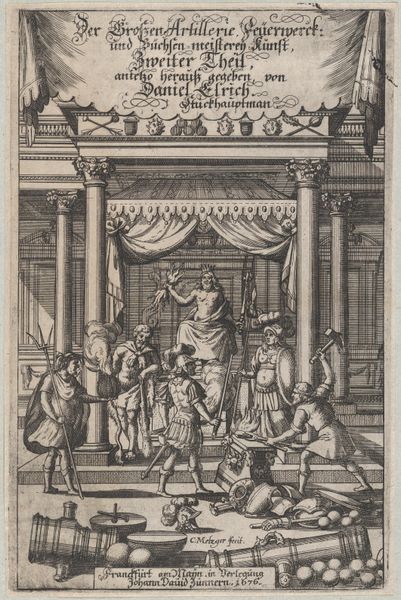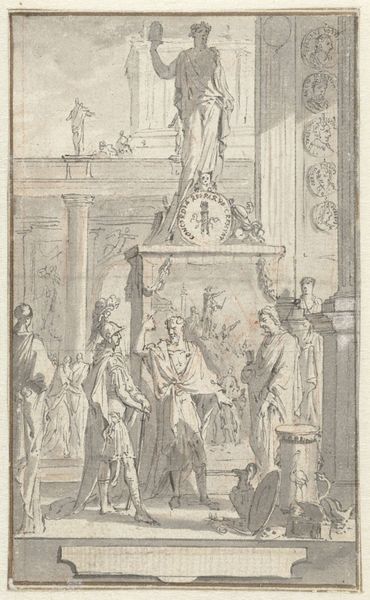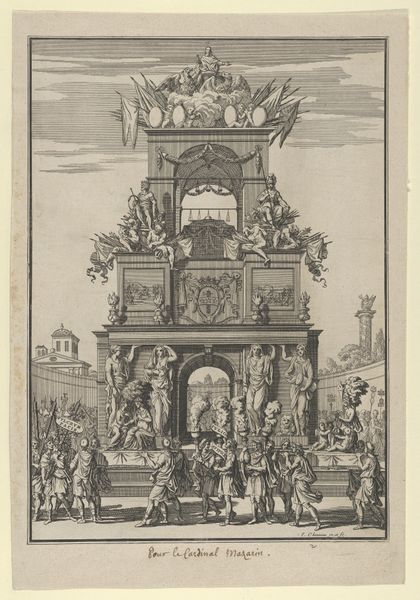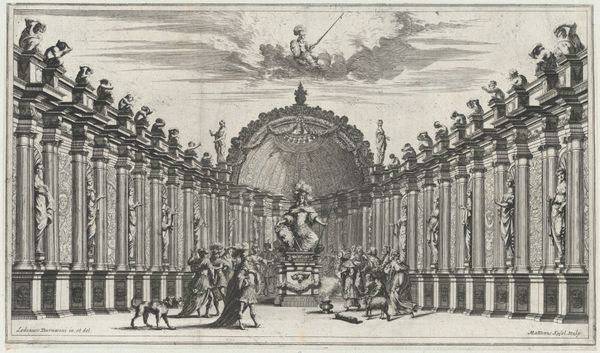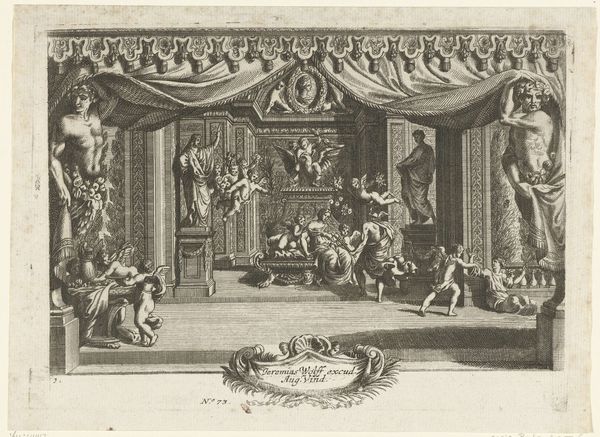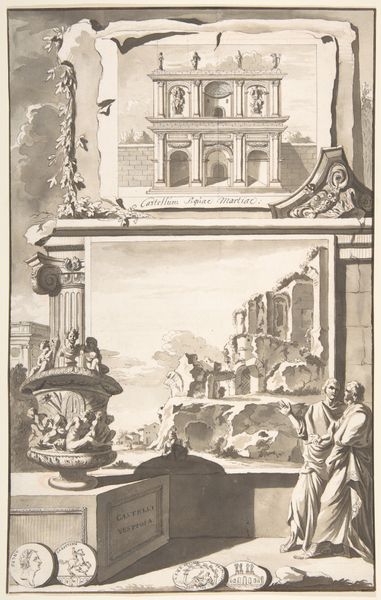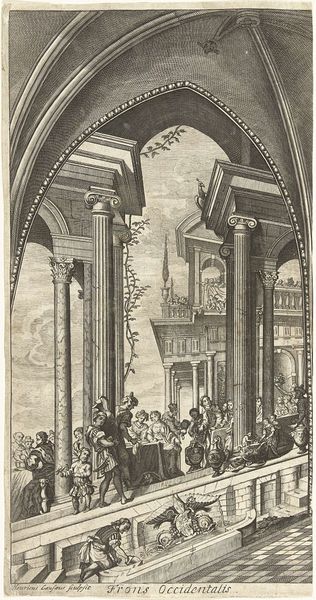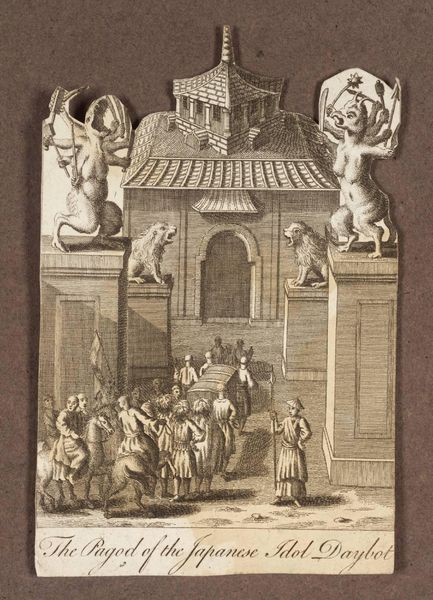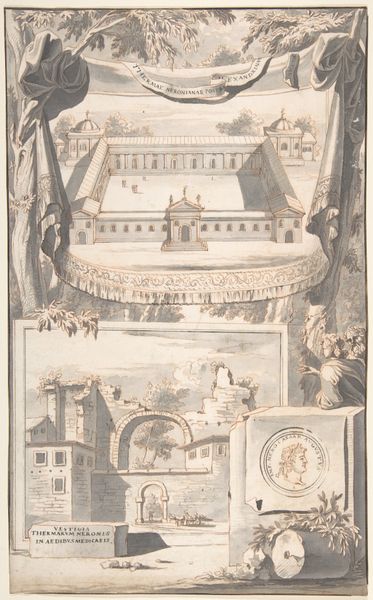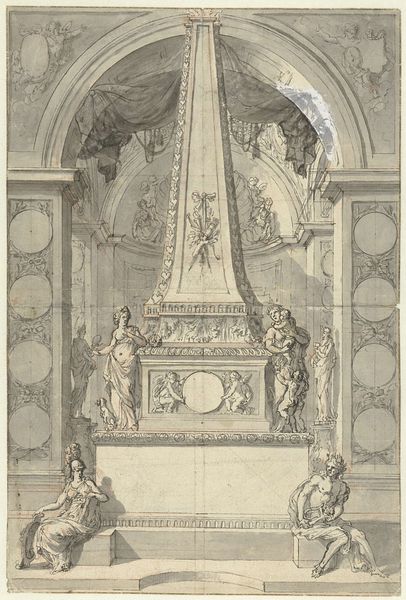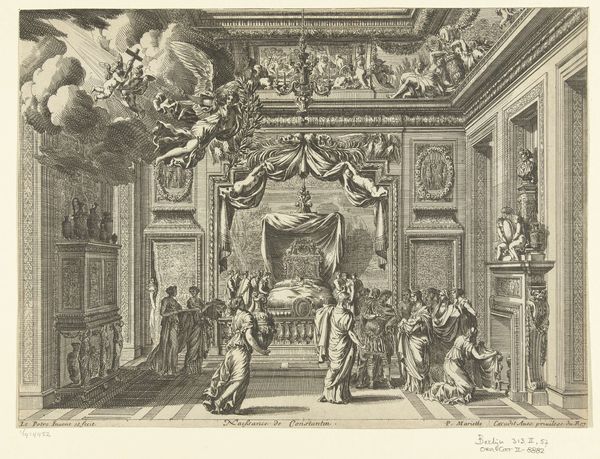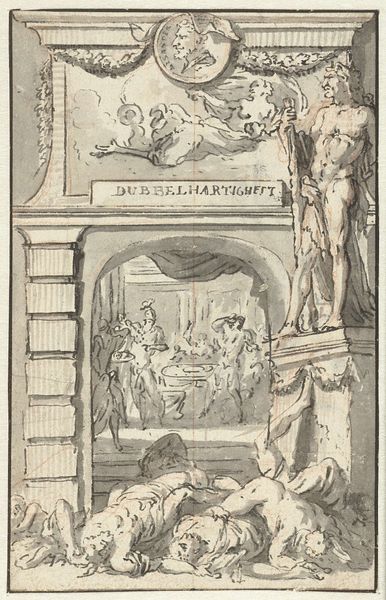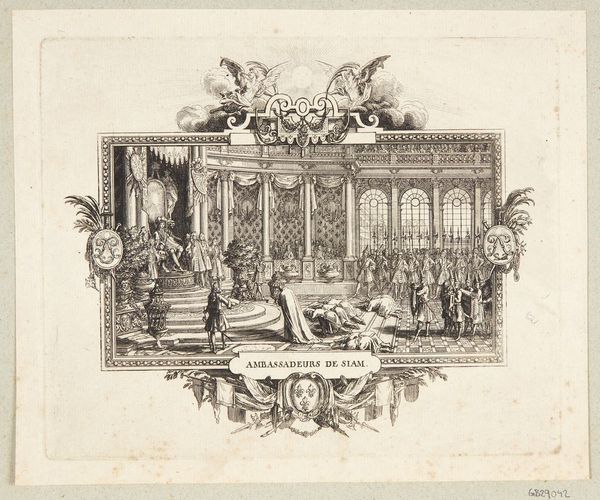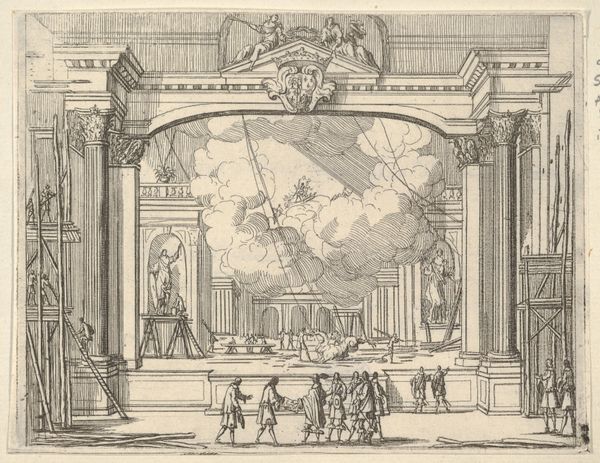
Design for a Stage Set: A Classical Courtyard and Colonnade with a Statue of Minerva 1780 - 1790
0:00
0:00
drawing, coloured-pencil, print, watercolor
#
drawing
#
neoclacissism
#
coloured-pencil
# print
#
landscape
#
figuration
#
watercolor
#
coloured pencil
#
history-painting
Dimensions: 17-3/8 x 12-3/8 in. (44.2 x 31.5 cm)
Copyright: Public Domain
Curator: Just looking at it, I immediately think of a half-remembered dream, one filled with impossible spaces and slightly unsettling serenity. What about you? Editor: This is Leonardo Marini's "Design for a Stage Set: A Classical Courtyard and Colonnade with a Statue of Minerva," created sometime between 1780 and 1790. It’s currently housed here at the Met. I see echoes of antiquity reworked through a theatrical lens. Curator: Absolutely. Those strong diagonals pulling the eye upwards, it really does feel like a stage doesn't it? It is so ordered, but even the running figures can’t disrupt its dream-like stillness. I think it reflects that peculiar late 18th-century fascination with rationalizing chaos, maybe like taming revolutionary thoughts within a controlled frame. Editor: It also reflects the symbolic language of the time. Minerva, of course, represents wisdom, strategic warfare, and the arts. Her presence in the central statue signals a deep connection to the classical world, seen as a repository of knowledge and virtue. These stage sets served not just as backdrops, but as ideological statements. Curator: That colonnade too feels laden with history and memory, doesn't it? Almost like a permeable barrier, but one made of rigid columns of social constructs. The figures down front seem suspended between admiration, fear and chaos. They almost look trapped, framed by the grandeur they might aspire to? Editor: A stage can be a powerful mirror, right? Marini uses these classical motifs to both elevate and subtly question the values of his time. The use of color and light reinforces the drama, those cool blues contrasting with the warm hues give depth and suggest hidden depths within the spectacle. Curator: It all seems poised, teetering. Those muted pinks are almost sickly sweet; there's decay implied alongside aspiration. It is lovely and terrible at the same time, you know? It would be quite a statement for a stage setting. Editor: Indeed, Marini uses the visual language of Neoclassicism to comment on society and, I think, reflect his era's intellectual and political currents. I wonder how audiences received these intricate and layered scenes? Curator: Contemplating the weight of these grand traditions, viewed from our contemporary standpoint, creates quite a captivating dialog. Thank you. Editor: It's remarkable how the piece manages to spark so much, doesn't it? A tiny colored-pencil sketch capable of prompting deep reflection, still speaking to us.
Comments
No comments
Be the first to comment and join the conversation on the ultimate creative platform.
